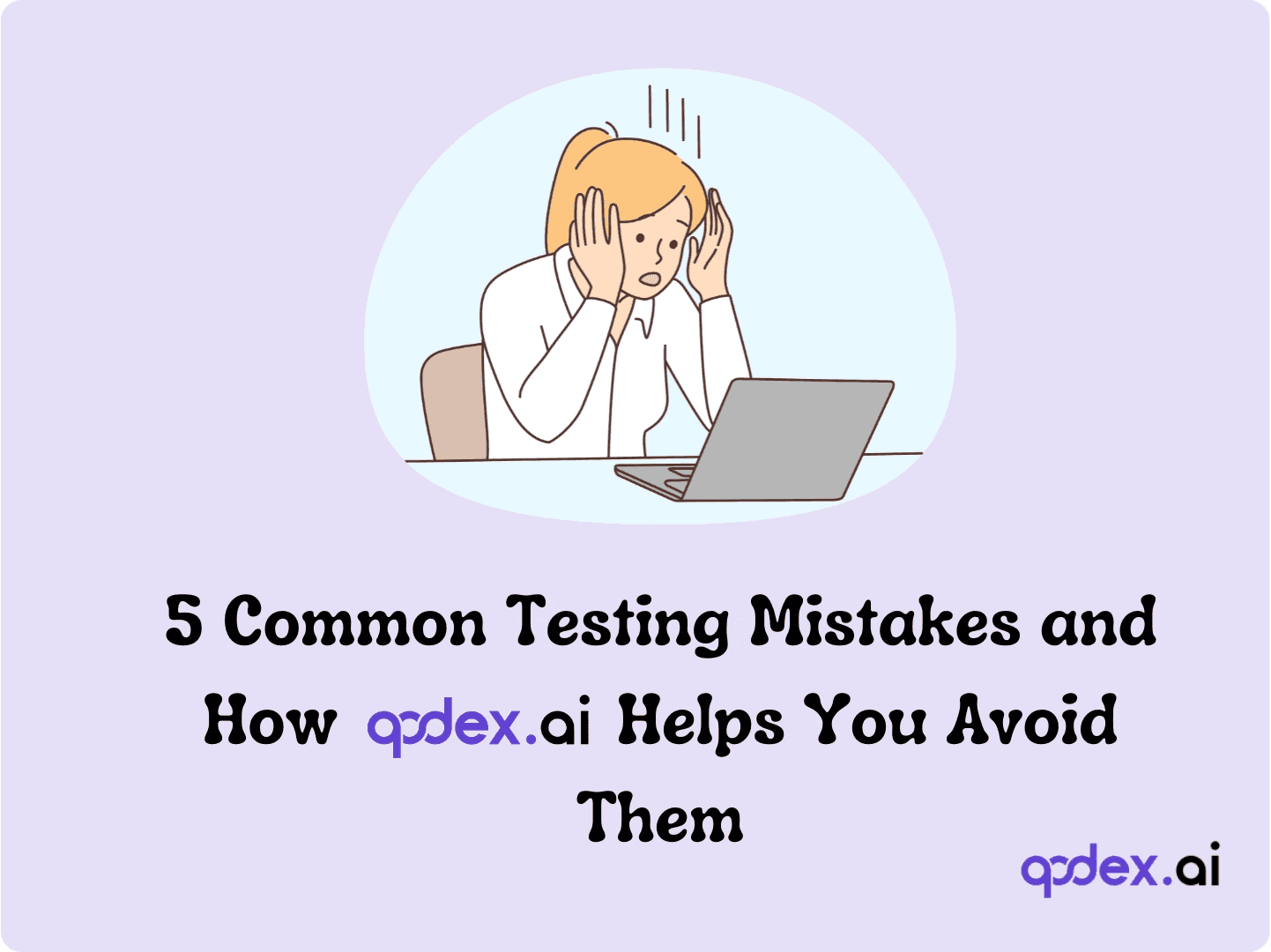Automated Web UI Testing: Your Essential Guide with Checklists
Introduction to Automated Web UI Testing
Automated Web UI Testing has become a cornerstone of modern web development, transforming how developers and QA engineers ensure their applications are robust, user-friendly, and bug-free.
In an era where user experience is paramount, automated testing offers a reliable and efficient way to maintain high standards of quality.
What is Automated Web UI Testing?
Automated Web UI Testing involves using software tools to execute predefined tests on the user interface of a web application.
These tests validate that UI elements like buttons, forms, menus, and links function correctly and provide a seamless user experience.
Unlike manual testing, automated testing can run thousands of test cases in a fraction of the time, ensuring faster feedback and more consistent results.
Why is it Important?
The importance of Automated Web UI Testing cannot be overstated. As web applications become more complex and user expectations rise, ensuring that every UI element works flawlessly across different browsers and devices is critical. Automated testing helps achieve this by:
Enhancing Efficiency: Automated tests can be executed quickly and repeatedly, providing instant feedback to developers and reducing the time needed for testing cycles.
Improving Accuracy: Automated tests eliminate human error, ensuring that every test is performed consistently and accurately.
Cost-Effectiveness: Over time, automated testing reduces costs associated with manual testing, including labor and the potential costs of missed bugs.
In the following sections, we will delve deeper into the components of web UI, the benefits of automation, essential checklists, challenges, and the best tools to use.
Understanding Web UI Components
Web User Interfaces (UI) form the interactive layer between users and web applications. Effective UI testing ensures these interfaces are not only functional but also provide a seamless and enjoyable user experience.
To appreciate the intricacies of automated web UI testing, it’s crucial to understand the various components and types of web UIs.
Types of Web User Interfaces
Web UIs can broadly be categorized into three types: Static, Dynamic, and Rich Internet Applications (RIA).
Static Web UIs: These are simple, HTML-based interfaces with limited interactivity. They display the same content to all users without any real-time updates. While they are easy to test due to their predictability, ensuring consistency across different browsers is still vital.
Dynamic Web UIs: These interfaces are more interactive, often built using JavaScript frameworks like Angular, React, or Vue.js. They can update content dynamically without requiring a page reload. Testing these UIs involves ensuring that dynamic content loads correctly and functions as expected.
Rich Internet Applications (RIA): These are highly interactive applications that provide a desktop-like experience within a web browser. They often use technologies like AJAX, Flash, or Silverlight. RIAs require thorough testing to ensure that all interactive elements function seamlessly across different environments.
Key Elements of Web UI
Understanding the key elements of web UI helps in identifying what needs to be tested. Here are some essential components:
Buttons: Ensure that buttons are clickable and perform the intended actions.
Forms: Validate that form inputs accept and process data correctly.
Menus: Test the navigation menus to ensure they are accessible and function properly.
Links: Verify that links direct users to the correct destinations.
Images and Icons: Ensure that all visual elements load correctly and enhance the user experience.
Text and Content: Check for proper display of text, avoiding any formatting issues or overlaps.
Why Qodex.ai is Ideal for Web UI Testing
Qodex.ai excels in testing various web UI components by leveraging AI-driven capabilities to adapt to dynamic content changes, ensuring high test coverage and accuracy. Here’s how Qodex.ai can enhance your UI testing process:
Comprehensive Test Coverage: Qodex.ai’s AI agent maintains exhaustive test cases, covering all UI elements and ensuring they function as intended.
Real-Time Adaptation: The AI agent adapts to changes in the UI, ensuring that test cases remain relevant and accurate as the application evolves.
Efficient Bug Detection: With continuous test execution, Qodex.ai identifies and reports bugs promptly, allowing for quicker resolution and smoother user experiences.
By understanding the types of web UIs and their key elements, and leveraging advanced tools like Qodex.ai, developers and QA engineers can ensure their web applications deliver high-quality user experiences consistently.
In the next section, we’ll delve into the essential checklists for automated web UI testing, providing practical guidelines to ensure comprehensive test coverage.
Essential Checklists for Automated Web UI Testing
Automated Web UI Testing ensures that all user interface elements perform as expected across different environments. To maximize the effectiveness of your automated tests, it’s crucial to follow comprehensive checklists.
These checklists help maintain consistency, identify potential issues early, and ensure a high-quality user experience. Here are the essential checklists for automated web UI testing:
1. Consistency in Visual Elements Across Browsers and Devices
Ensure that visual elements such as fonts, colors, buttons, and layouts remain consistent across different browsers and devices.
Automated tools like Qodex.ai can run parallel tests across multiple environments to verify this consistency, saving you time and ensuring a seamless user experience.
Checklist:
Verify font styles, sizes, and colors.
Check button sizes, placements, and hover effects.
Ensure layout consistency across different screen resolutions.
Validate image rendering and alignment.
2. Spelling and Grammar Checks for Web Content
Accurate text content is crucial for maintaining professionalism and user trust. Automated tools can include spell-check algorithms to ensure there are no spelling or grammatical errors in the web content.
Checklist:
Run automated spell checks on all text elements.
Verify grammar and punctuation.
Ensure correct language settings are applied across different regions.
3. Functional Validation of Web Elements
Automated testing should cover the functional aspects of UI elements to ensure they perform as expected. This includes verifying that buttons trigger the correct actions, forms process data accurately, and menus navigate to the correct pages.
Checklist:
Test button functionalities and their responses.
Validate form submissions, error messages, and data processing.
Check menu navigation and dropdown functionality.
Verify the functionality of interactive elements like sliders and carousels.
4. Responsiveness and Adaptability to Different Screen Sizes
Web applications must be responsive and adapt seamlessly to various screen sizes and devices. Automated tests should cover a range of screen resolutions to ensure the UI adjusts correctly.
Checklist:
Test UI responsiveness on different devices (mobile, tablet, desktop).
Validate that elements adjust correctly in landscape and portrait modes.
Check the alignment and readability of text and images on smaller screens.
Ensure touch functionalities work correctly on mobile devices.
5. Cross-Browser Compatibility Testing
Your web application should work flawlessly across all major browsers. Automated cross-browser testing ensures that your application performs consistently regardless of the browser used.
Checklist:
Run tests on all major browsers (Chrome, Firefox, Safari, Edge).
Verify functionality in different browser versions.
Check for any browser-specific UI issues.
Ensure that JavaScript and CSS work consistently across browsers.
6. Error Handling and Message Validation
Proper error handling and user-friendly messages are essential for a good user experience. Automated tests should validate that errors are handled gracefully and informative messages are displayed to users.
Checklist:
Verify that error messages are displayed for invalid inputs.
Check the consistency and clarity of error messages.
Test application behavior during network failures or slow connections.
Ensure that user data is protected and error logs are generated correctly.
Qodex.ai Enhancements
Qodex.ai can significantly enhance these testing processes by leveraging AI to maintain up-to-date test scripts and perform comprehensive checks across various environments. Here’s how Qodex.ai fits into these checklists:
Consistency Checks: Qodex.ai’s AI-driven tool ensures consistent visual elements by running parallel tests across multiple browsers and devices.
Content Verification: It includes automated spell and grammar checks to maintain professionalism.
Functional Testing: Qodex.ai automates the validation of web elements’ functionality, ensuring accurate and reliable interactions.
Responsiveness Testing: Its AI capabilities adapt to different screen sizes, verifying that the UI is responsive and user-friendly.
Cross-Browser Testing: Qodex.ai offers robust cross-browser testing, ensuring your application works seamlessly across all major browsers.
Error Handling: The tool validates error handling mechanisms and ensures that informative messages are displayed correctly.
Incorporating these essential checklists into your automated web UI testing process, with the help of advanced tools like Qodex.ai, ensures a comprehensive and efficient testing strategy.
This approach not only enhances the quality of your web application but also ensures a seamless user experience across various platforms and devices.
Tools and Frameworks for Automated Web UI Testing
Selecting the right tools and frameworks is crucial for successful automated web UI testing.
The right choice depends on your project requirements, team expertise, and integration needs.
Here’s an overview of some of the most popular tools, starting with Qodex.ai, a powerful AI-driven testing tool.
1. Qodex.ai
Overview: Qodex.ai is a comprehensive AI-driven tool designed to automate and streamline both API and UI testing processes. Its capabilities include continuous test coverage, real-time adaptation, and integration with various tech stacks.
Features:
AI-Powered Testing: Qodex.ai’s AI agent maintains exhaustive test cases, ensuring thorough coverage of UI elements and adapting to changes in real-time.
Integration: Compatible with your preferred tech stack, development tools, and workflows. Integrates seamlessly with product documentation, code bases, and other resources.
Continuous Test Coverage: Provides cutting-edge AI tooling for maximum continuous test coverage.
Exhaustive Test Suite: AI-generated test suite that QA engineers can review and refactor using natural language conversations.
Efficiency: Quickly build and maintain test suites, run tests, and review reports. Provides release notes with a changelog upon shipping.
Pricing:
Standard Plan:
1 AI Backend Test Engineer
30-day free trial/probation
400 test cases
Unlimited test runs, guaranteed parallel execution time
$200/month
Enterprise Plan:
20+ AI Backend Test Engineers
400 test cases per engineer
Unlimited test runs, guaranteed parallel execution time
Custom Pricing
2. Selenium
Overview: Selenium is an open-source framework widely used for automating web applications across different browsers and platforms. It supports multiple programming languages, including Java, C#, and Python.
Features:
Multi-Browser Support: Automates browsers like Chrome, Firefox, and Safari.
Cross-Platform: Runs on various operating systems such as Windows, Mac, and Linux.
Language Support: Allows test scripts to be written in multiple languages.
Pricing: Free and open-source.
3. Cypress
Overview: Cypress is a JavaScript-based end-to-end testing framework designed for modern web development. It provides fast, reliable testing for anything that runs in a browser.
Features:
Real-Time Reloads: Automatically reloads whenever you make changes to your tests.
Debuggability: Time travel feature for debugging.
Interactive: Provides detailed insights and snapshots of each step.
Pricing:
Free Plan: $0/month for up to 50 users and 500 test results.
Team Plan: $67/month (billed annually) for up to 50 users and 120,000 test results.
Business Plan: $267/month (billed annually) for up to 50 users and 120,000 test results.
Enterprise Plan: Custom pricing for unlimited users and custom test results.
4. Playwright
Overview: Playwright is a Node.js library that allows for cross-browser testing using a single API. It supports automation of Chromium, Firefox, and WebKit browsers.
Features:
Cross-Browser Support: Automates Chrome, Firefox, and Safari.
CI/CD Integration: Seamless integration with continuous integration and delivery pipelines.
Advanced Interactions: Supports complex user interactions such as file uploads and drag-and-drop.
Pricing: Free and open-source.
5. BrowserStack
Overview: BrowserStack provides a cloud-based platform for cross-browser testing on real devices and browsers, ensuring accurate and reliable results.
Features:
Real Device Testing: Test on over 3,500 real devices and browsers.
Comprehensive Environment: Provides a wide range of operating systems and device configurations.
Integration: Integrates with popular CI/CD tools.
Pricing:
Desktop Plan: $29/month (billed annually).
Desktop & Mobile Plan: $39/month (billed annually) for a single user.
Team Plan: $150/month (billed annually) for up to 5 users.
Enterprise Plan: Custom pricing for large teams.
Examples of Automated Web UI Tests
Automated web UI tests are essential for ensuring your application's interface works seamlessly across different environments.
These tests validate user interactions, data integrity, and the overall workflow of web applications.
Here are some practical examples of automated web UI tests, showcasing how they can be implemented and the value they bring.
Example 1:
Imagine you have a JavaScript-based web application built with frameworks like React or Angular.
The goal is to ensure that the application's user interface performs correctly across various scenarios, from simple button clicks to complex data submissions.
Example Test Cases:
User Interaction Tests: Verify that buttons, links, and other interactive elements respond correctly to user inputs.
Form Validation: Ensure that form fields accept valid data, reject invalid inputs, and display appropriate error messages.
Navigation Flow: Test that users can navigate through the application smoothly without encountering broken links or dead ends.
Tool in Action: Using Qodex.ai, these tests can be automated efficiently. Qodex.ai's AI-driven capabilities allow it to adapt to changes in the UI, ensuring test cases remain accurate and up-to-date.
Its integration with your tech stack enables seamless execution of these tests as part of your continuous integration/continuous deployment (CI/CD) pipeline.
Designing Test Cases for User Interactions, Data Validation, and Workflow Verification
Creating comprehensive test cases is crucial for covering all aspects of your web application. Here are some key areas to focus on:
User Interactions:
Click Events: Test that clicking buttons triggers the expected actions.
Hover Effects: Verify that hover effects display correctly.
Drag-and-Drop: Ensure drag-and-drop functionality works as intended.
Data Validation:
Input Fields: Check that input fields accept valid data and handle invalid inputs gracefully.
Data Submission: Test that data submitted through forms is processed correctly.
Workflow Verification:
User Journeys: Automate tests for common user journeys to ensure the application flows smoothly from one page to another.
Multi-Page Forms: Verify that multi-page forms retain data across steps and submit correctly.
Tool in Action: Qodex.ai excels in designing and maintaining these test cases. Its AI agent continuously updates the test suite to reflect changes in the application, ensuring that all user interactions, data validations, and workflows are thoroughly tested.
Automating Tests for Multi-Browser Compatibility
Ensuring that your web application works across different browsers is critical for providing a consistent user experience. Automated multi-browser testing verifies that your UI performs as expected in various environments.
Example Test Cases:
Cross-Browser Testing: Validate that the application looks and functions correctly in Chrome, Firefox, Safari, and Edge.
Responsive Design Testing: Ensure the UI adapts to different screen sizes and orientations.
Tool in Action: Qodex.ai supports multi-browser testing, running tests in parallel across various browsers to ensure compatibility.
This capability reduces the time and effort required to test your application on multiple platforms, providing quick feedback and facilitating rapid fixes.
By implementing these automated web UI tests, you can ensure that your web application delivers a reliable and consistent user experience.
In the next section, we will explore best practices for automated web UI testing, providing guidelines to help you optimize your testing strategy.
Conclusion: Critical Role of Automated Web UI Testing
Automated Web UI Testing is pivotal in modern web development, ensuring that applications deliver a seamless and reliable user experience.
By leveraging tools like Qodex.ai and following best practices, teams can achieve faster feedback cycles, improved test accuracy, and significant cost reductions.
Embracing automation not only enhances the efficiency of the testing process but also ensures comprehensive coverage and higher quality software releases.
As you integrate these strategies and tools into your workflow, remember to continually update and maintain your tests, prioritize high-impact areas, and utilize detailed reporting for ongoing improvements.
The future of web UI testing is bright with advancements in AI and machine learning, promising even more efficient and intelligent testing solutions.
For more information on how Qodex.ai can revolutionize your testing processes, visit Qodex.ai for early access to our automation testing features.
Frequently Asked Questions
Why should you choose Qodex.ai?
Qodex.ai simplifies and accelerates the API testing process by leveraging AI-powered tools and automation. Here's why it stands out:
- AI-Powered Automation
Achieve 100% API testing automation without writing a single line of code. Qodex.ai’s cutting-edge AI reduces manual effort, delivering unmatched efficiency and precision.
- User-Friendly Platform
Effortlessly import API collections from Postman, Swagger, or application logs and begin testing in minutes. No steep learning curves or technical expertise required.
- Customizable Test Scenarios
Whether you’re using AI-assisted test generation or creating test cases manually, Qodex.ai adapts to your needs. Build robust scenarios tailored to your project requirements.
- Real-Time Monitoring and Reporting
Gain instant insights into API health, test success rates, and performance metrics. Our integrated dashboards ensure you’re always in control, identifying and addressing issues early.
- Scalable Collaboration Tools
Designed for teams of all sizes, Qodex.ai offers test plans, suites, and documentation that foster seamless collaboration. Perfect for startups, enterprises, and microservices architecture.
- Cost and Time Efficiency
Save time and resources by eliminating manual testing overhead. With Qodex.ai’s automation, you can focus on innovation while cutting operational costs.
- Continuous Integration/Delivery (CI/CD) Compatibility
Easily integrate Qodex.ai into your CI/CD pipelines to ensure consistent, automated testing throughout your development lifecycle.
How can I validate an email address using Python regex?
You can use the following regex pattern to validate an email address: ^[a-zA-Z0-9._%+-]+@[a-zA-Z0-9.-]+\.[a-zA-Z]{2,}$
What is Go Regex Tester?
Go Regex Tester is a specialized tool for developers to test and debug regular expressions in the Go programming environment. It offers real-time evaluation of regex patterns, aiding in efficient pattern development and troubleshooting
Discover, Test, & Secure your APIs 10x Faster than before
Auto-discover every endpoint, generate functional & security tests (OWASP Top 10), auto-heal as code changes, and run in CI/CD - no code needed.
Related Blogs


